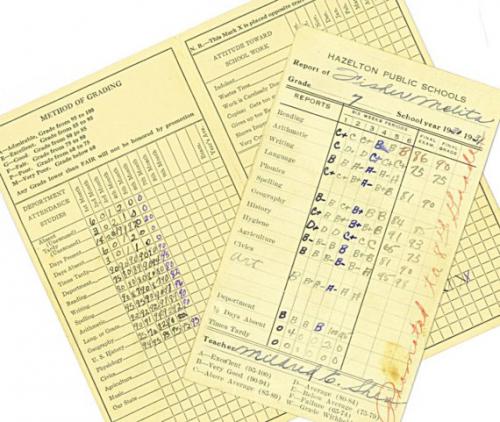
Image Credit:
In the Learning Record, I tell my students, change is a requirement. If you don’t change, you fail. The Learning Record, an alternative grading system designed by Professor Peg Syverson at UT, provides the structure for monitoring change and the vocabulary for describing it, thereby aiding students in their process of self evaluation. The six dimensions of learning describe six ways to change: in knowledge and understanding, acquiring new vocabulary and conceptual frameworks; in skills and strategies, adopting new practices of reading, writing, learning; in confidence and independence, replacing passivity with initiative; in creativity and originality, attempting the unexpected; in use of prior and emerging experience, applying know-how to new situations; in reflection, looking back to place work in the broader context of learning, learning in the broader context of a holistic understanding. With six ways to change, it’s fair to say that if you don’t, you fail.

Besides, I believe that change is a requirement for success inside and outside of the classroom. This semester, inside the classroom, I’m fulfilling that requirement by using the Learning Record to monitor my own progress as a teacher. Like my students, I began the semester by writing a reflection on my prior experience, my established skills and strengths, and my concerns and goals for this class. As the semester advances, I make weekly observations on my teaching. And now, at midterm, I look back and provide an interim evaluation. The “Teaching Record” has been a welcome and productive addition to my teaching practice as it helps me direct change, self evaluate for my teaching portfolio, and make productive use of my after-class thoughts and feelings.
At my midterm reflection and evaluation, I notice that some goals I set initially have fallen by the wayside. While I wrote early on that I aimed to “get the best out of every student,” I realize now that I can push further some class members who are largely silent during discussion. Furthermore, I notice that this unmet goals lines up exactly with the student feedback on my teaching I’ve received. When I met with students individually at midterm, some complained that a few students don’t participate, and asked me to do more work to include all. As I move forward in the second half of the term, the Teaching Record has helped me identify where to focus productive changes, and helped me realize that I’ve created a classroom where my students and I share a vision of the ideal discussion dynamic (even if I haven’t yet created that ideal).
At the end of term, just like my students, I’ll repeat this process: reflecting on the entire semester, noting where I’ve met my goals and what I’ve changed, and evaluating my development as a teacher. This final review will not only help me understand what has happened in this class, it will also be useful for the purposes of building my teaching portfolio. My end-of-semester Teaching Record can serve as a standalone self-evaluation and as notes towards revising my teaching statement.
In the meantime, the Teaching Record serves as a productive outlet for all my post-class thoughts and feelings. An electrifying discussion, or a flat one, can hold my attention long after class ends. The Teaching Record gives me a place to focus that attention: in writing a brief observation and reflection on the day’s meeting, theorizing its outcomes, and noting what I’d like to repeat or change next time.
One of the most rewarding parts of the Learning Record is seeing a student really take control of their development, taking it exactly where they need it to go. I see this as a student’s observations accumulate, as they exceed requirements, as they get more creative and more committed. When the Learning Record really works, a student becomes one of his own best teachers; his teacher becomes a collaborator. Now that I’m working with the Teaching Record, I’m changing the ways I’m teaching myself, and becoming a better student of pedagogy.

